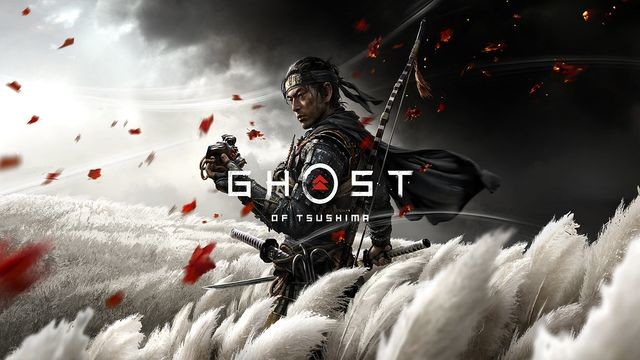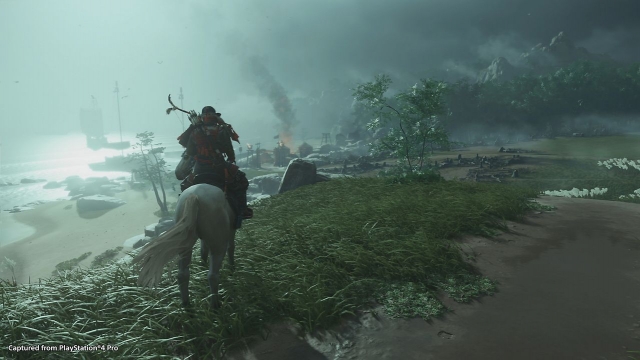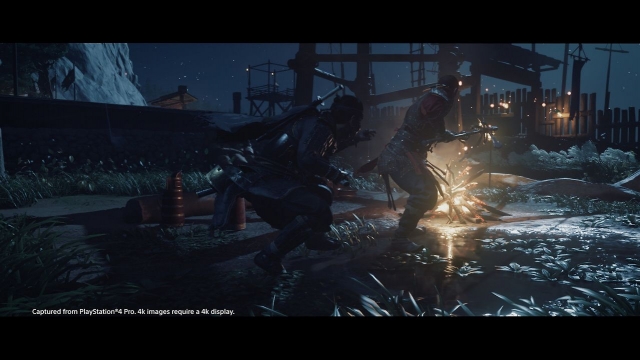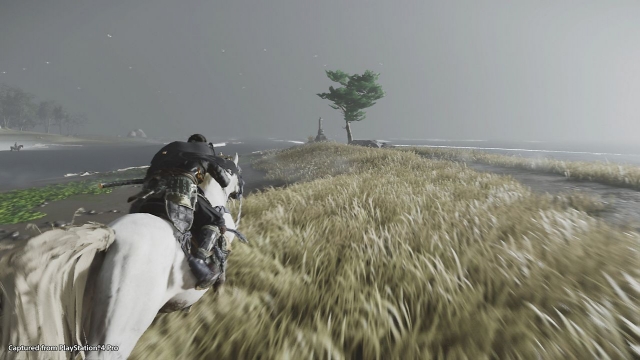Ghost of Tsushima

Ghost of Tsushima is probably going to be divisive. It’s a competently made, extraordinarily beautiful game with great action, acting, and storytelling, but it’s also exactly the same kind of open-world sandbox as half a dozen other recent hits. The richly detailed setting and graphics don’t quite make up for that unfortunate similarity.
In that, Ghost actually has a bit in common with last year’s Days Gone, which had a similar issue. There’s nothing actually wrong with Ghost’s basic flow, but if you play a lot of these open-world games, it’s hard not to feel like you’ve taken this ride before. It’s not at all bad; it’s just familiar, which works against it.
You play as Jin Sakai, one of the handful of samurai charged with defending Japan against the first Mongol invasion in the late 13th century. Historically, this was one of the great blowout fights of all time, to the point where it would look vaguely ridiculous if you tried to write it into a novel; Japanese warfare in the period was highly rigid and formalized, focusing on individual duels, while the Mongols showed up with poisoned arrows, flash grenades, and group tactics.
Jin is one of the only samurai to survive their initial encounter with the Mongols, which leaves the island of Tsushima mostly on its own against an invading army. When Jin learns his uncle, the local lord, has been captured by the Mongols’ Khan, he goes on a rescue mission… which immediately fails. Jin is subsequently forced to find new allies and embrace new tactics in order to fight off the Mongols, moving from the code of the samurai to a new style of asymmetric warfare.
It’s one of the most clever things about Ghost of Tsushima. The game’s combat heavily emphasizes stealth, assassination, and clever traps to even the odds, as you’re almost always outnumbered. Over the course of multiple missions, Jin gradually masters these tactics and tools, hating every second of it, because it’s necessary. It’s a story, told through game mechanics, of a samurai breaking all of his old rules for the greater good of his country and people.
The most important thing to know about Ghost, however, is that it hands out majestic natural vistas in the same way other games have loading screens. Expect to spend a lot of time in photo mode, as there really isn’t a single frame of Ghost that isn’t a visual feast. It’s a last hurrah for the PlayStation 4 on its way out, and all the stops have been pulled out. This is the kind of idealized Japanese landscape that only ever existed in paintings and the occasional movie, turned into an interactive diorama.
The combat is the next most impressive thing. Historically, duels between two samurai ended in both fighters dying about half the time, and Ghost feels like its fighting was made with that in mind. Even a single standard enemy can punch your ticket for you if you aren’t careful, as Ghost emphasizes well-timed parries and dodges to set up vicious counteratttacks. You have a handful of ways to even the odds, like surprising an enemy with a thrown knife to the face, but the moment-to-moment fighting in Ghost is vicious and intense.
What it ends up doing is reinforcing Jin’s central struggle, as your best way through most fights in Ghost is to make sure they don’t start at all. You’re better off assassinating your enemies, or shooting them in the back of the head with an arrow from 30 meters, than actually picking a fight. There’s actually an entire mechanic, called Showdown, where you can challenge the most skilled warrior in an enemy camp to a one-on-one duel, where you can cut him in half with a single iajutsu-style swing of your sword… but then, more often than not, the four less-skilled warriors he had with him will surround you and punch in your hairstyle. Samurai are cool, the game seems to be saying, but this isn’t really a samurai story anymore.
Once you get past the game’s first couple of hours, it opens up and gives you the run of the island of Tsushima. Most of it is either controlled by or being harassed by the Mongols, and it’s up to you to gradually gather allies and make slow inroads against them. In other words, this is where Ghost of Tsushima turns into a typical open-world game, where you use stealth, cunning, traps, and allies to gradually turn a red map blue. It’s even got platform-style tower missions, where you climb old rickety paths up to mountaintop shrines to unlock new passive abilities you can equip to your sword.
This is where Ghost started to wear on me, as once its world opens up, it immediately becomes Yet Another Open-World Game. It’s a beautiful environment populated by memorable characters in a bleak but hopeful setting, sure, but I’m still climbing towers, capturing outposts, hunting for collectibles, gathering crafting materials, and running into suspiciously well-armed random encounters in the middle of nowhere. You also start off extraordinarily weak, so it’s difficult to do more than a little token exploring before you’re forced to take on the first few story missions in exchange for badly-needed new moves and equipment.
This isn’t to say that Ghost’s particular take on open-world games is badly executed; far from it, in fact. The issue isn’t that it’s inherently flawed on a craft level, but rather that I’ve been here before, recently and often.
I’m guessing that Ghost of Tsushima will find an audience, but much as with Days Gone, that audience will mostly be newcomers and more casual players. There’s just too much here that feels way too familiar for an enthusiast audience; much of Ghost’s moment-to-moment gameplay is well-done but well-worn, with an array of mechanics that are all taken from most of the other open-world games from the last seven years or so. There’s nothing wrong with it, but I really do feel like I’ve played this before several times, albeit with worse graphics in different settings.
I do want to be clear, however, that if you don’t usually go for this kind of game, if you just can’t get enough open-world action, and/or you’re a massive mark for samurai movies, Ghost of Tsushima is a perfectly good game with an amazing presentation. Its biggest problem is that it’s Yet Another Open-World Game, and if you haven’t played all the others, this is one of the best places to start. This score is for me, as I can’t really get into Ghost due to how repetitive it feels, but newer players can safely tack on another 10 points or more.
Reviewed By: Thomas Wilde
Publisher: Sony Interactive Entertainment
Rating: 80%
——————————————————————————–
This review is based on a digital copy of Ghost of Tsushima for the PlayStation 4 provided by Sony Interactive Entertainment.
 Game Over Online
Game Over Online













